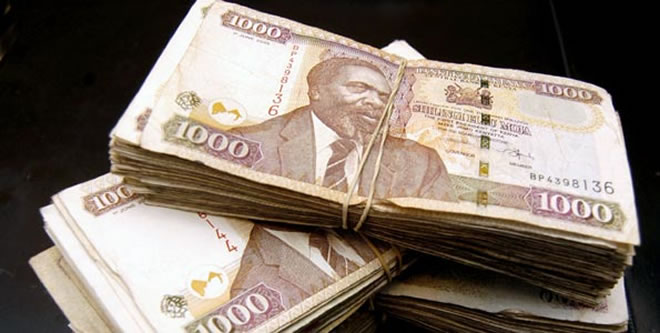The pile of Kenya’s bad bank loans rose Sh47 billion (UShs1.74trillion) to Sh259 billion (UShs9.3 trillion) in the year to December 2017, exposing the negative effect that last year’s political turbulence had on the economy, Business Daily reports.
The Central Bank of Kenya (CBK) says in the latest credit officer survey report for the quarter ending December 2017 that the period was marked by a slowdown in business activities, which ultimately affected the ability of businesses to service their loans.
This resulted in the ratio of non-performing loans to gross loans rising to 10.56 per cent, a significant annual increase from the 9.1 per cent at the end of December 2016.
The report also shows that there was a quarterly increase from the 10.44 per cent ratio recorded at the end of September last year.
This was in spite of the rate cap that has put a 14 per cent ceiling on cost of loans, effectively meaning that borrowers were not failing to pay because loans had become too expensive.
“The ratio of gross non-performing loans to gross loans increased from 10.44 per cent in September 2017 to 10.56 per cent in December 2017. This was attributed to a slowdown in business activities,” says the report that was released this week.
Marginal growth
Borrowing, however, grew marginally pushing the gross loan book to Sh2.45 trillion at the end of December 2017, compared to Sh2.33 trillion at the end of 2016.
Official statistics show that the economy grew at just 4.4 per cent in the third quarter of last year saddled by prolonged drought and a turbulent political season, making it the slowest quarterly growth rate since the fourth quarter of 2013.
As a result, thousands of Kenyans lost their jobs last year as a number of companies —including banks — reacted to falling revenues by retrenching workers.
The retrenchments in turn had a knock-on effect on the ability of those who lost jobs to service their loans, including facilities taken to finance assets such as motor vehicles and mortgages.
Small businesses that depend on credit to finance operations were also going through a hard time — many having been denied access to credit and ultimately lacking ability to service old loans.
Focus on recovery
The majority of the 41 banks polled in the survey, however, said they expect the high level of non-performing loans to start easing in the first quarter of this year as the country moves away from the turbulent political season.
“Generally, commercial banks expect a drop in the levels of NPLs in the first quarter of 2018 with 58 per cent of the respondents indicating so. This expected drop in NPLs is attributed to the enhanced recovery efforts by most banks.
The banks’ strategy is mainly focused on recovery of non-performing loans,” said CBK. The lenders have also been tightening their credit standards, reacting to both the rate cap and the new IFRS 9 standards that would make it costlier to lend to risky customers.
This is especially true of SME lending, where 59 per cent of the polled lenders said that their lending to this sector of the economy has been negatively affected by the rate cap.





